Keppie at 170: The New University Hospital Monklands (5 Of 12)
- Written by
- David Ross
- Listed in
- Posted on
- 31st May 2024
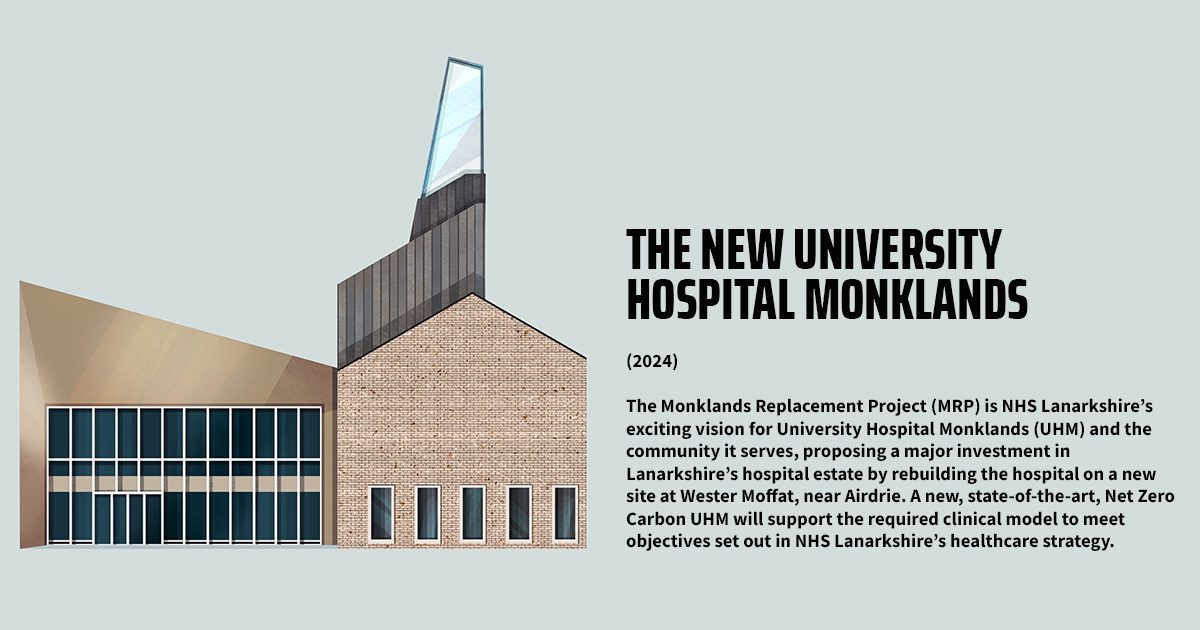
(Image courtesy of Natalie Tweedie / Nebo Peklo)
The Monklands Replacement Project (MRP) vision is for a new future-looking clinical model, putting patient care at the centre of the planning and redesign process. NHS Lanarkshire undertook a comprehensive and detailed exercise to assess site options for the development of a replacement for University Hospital Monklands.
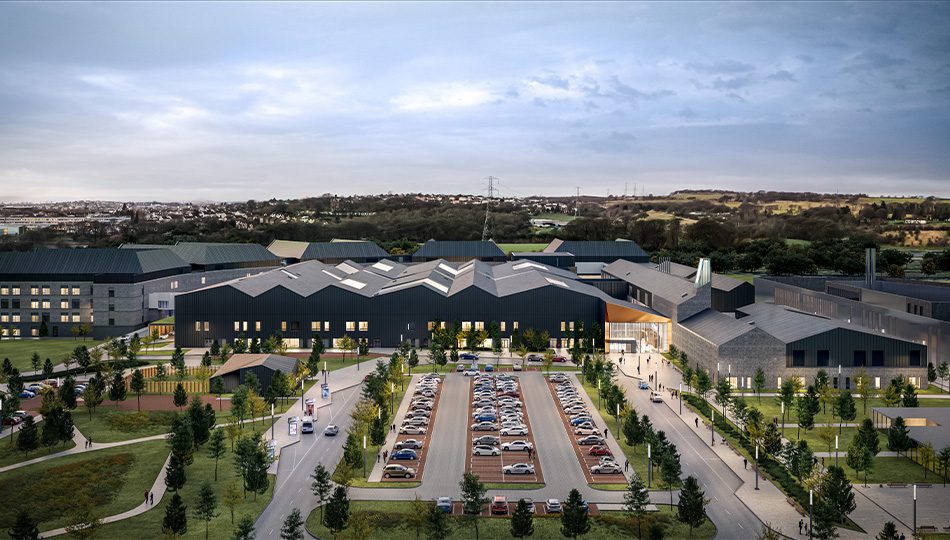
This process, run over several years, resulted in Wester Moffat, east of Airdrie, being selected as the preferred site of the new hospital. Wester Moffat was formally confirmed as the preferred location by the Cabinet Secretary for Health & Wellbeing in January 2021. This was further ratified by the approval of the projects Outline Business Case in July 2023.
The site is located approximately 2.5km to the east of Airdrie Town Centre at an area known as Wester Moffat. The redline boundary, illustrated in red on the image below, defines the extent of the proposed hospital development.
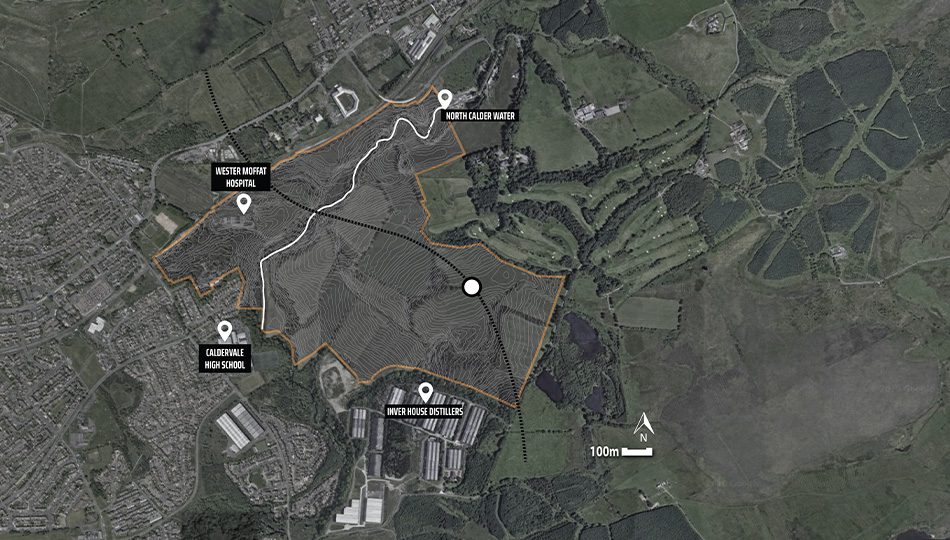
Access to the new hospital will be provided by the East Airdrie Link Road, a City Deal scheme being developed by North Lanarkshire Council.
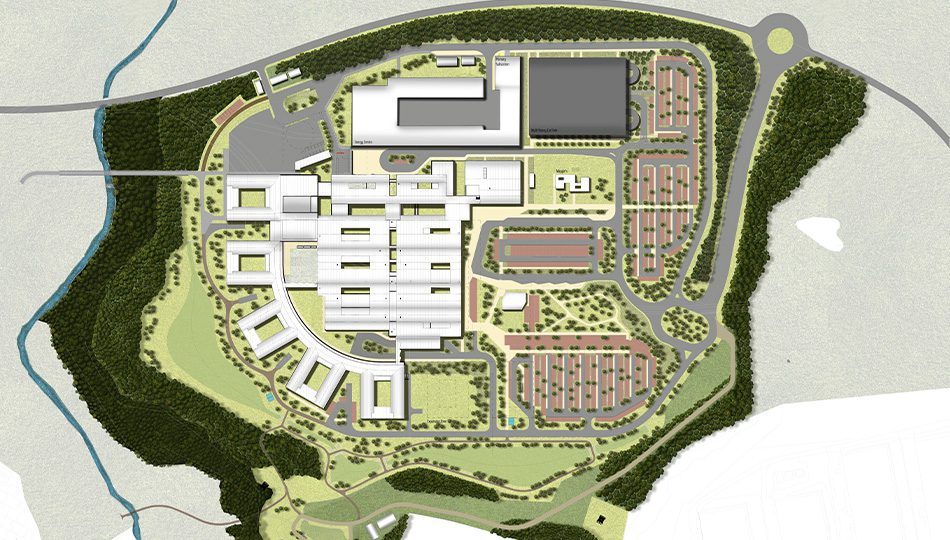
‘The Village’ as a metaphor: The philosophy behind the development of New Monklands Hospital is to create an environment that is based on a human scale and provides interesting spatial experiences to both adults and children. The building is divided into separate areas or districts, each with its own identity but unified as part of the “town” plan.
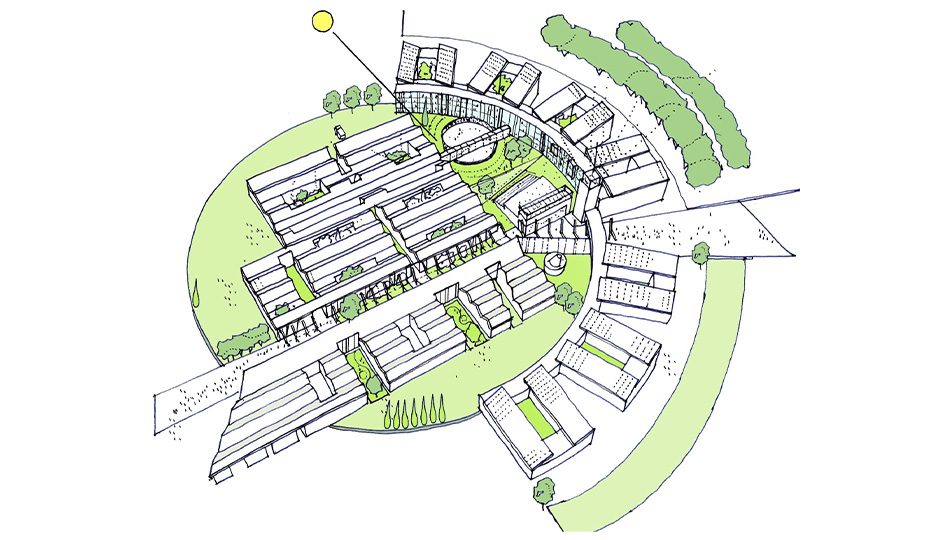
The main pedestrian street is the spine of the building, connecting the different districts and establishing a hierarchy and sense of place. The overall aim is to create a successful town or village plan that promotes public and clinical interaction and embraces natural light and outdoor space as powerful factors in the promotion of health and wellbeing.
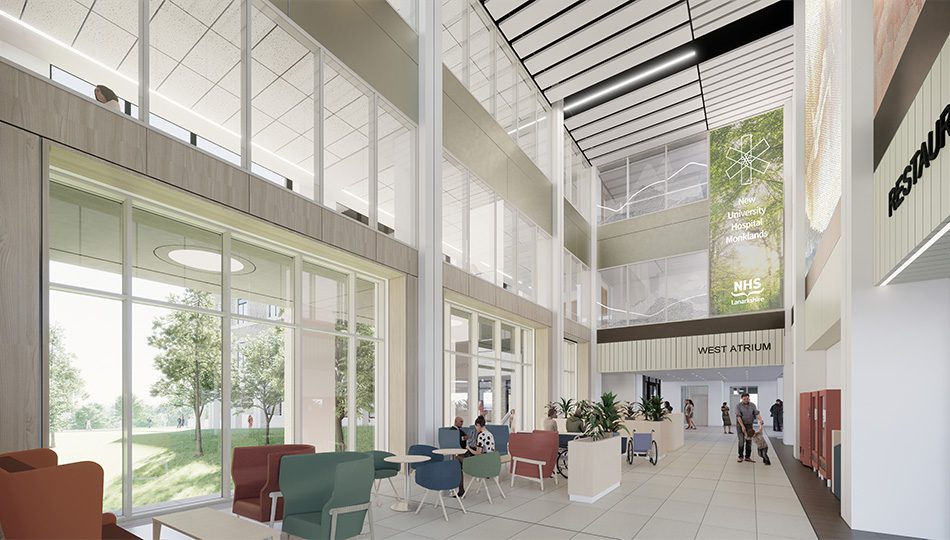
The overall size and configuration of the emerging hospital design is based firmly on the future model of care which seeks to optimise departmental adjacencies, encourage teamwork between related specialities, improve patient flow, reduce duplication of spaces, and create a person-centred environment that promotes safety, recovery, and well-being.
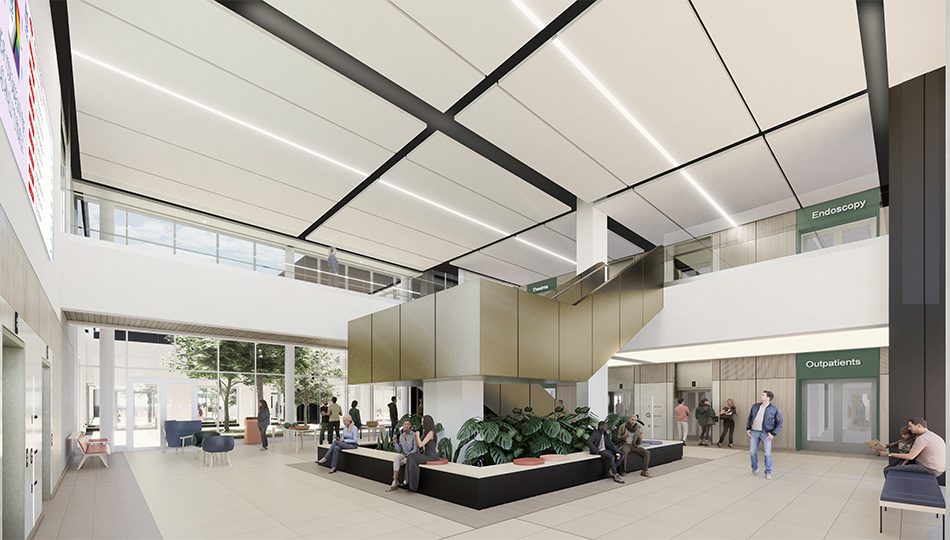
The new Monklands facility will be equipped with an array of specialist departments that are crucial for a major acute hospital, comprising single en-suite bedrooms and facilities such as operating theatres, emergency department, endoscopy, infectious diseases, critical care, renal, radiotherapy, imaging, and outpatient departments. The new fully digital hospital will ensure safer and better patient care using digital technology and real-time information to support an efficient and effective patient journey.
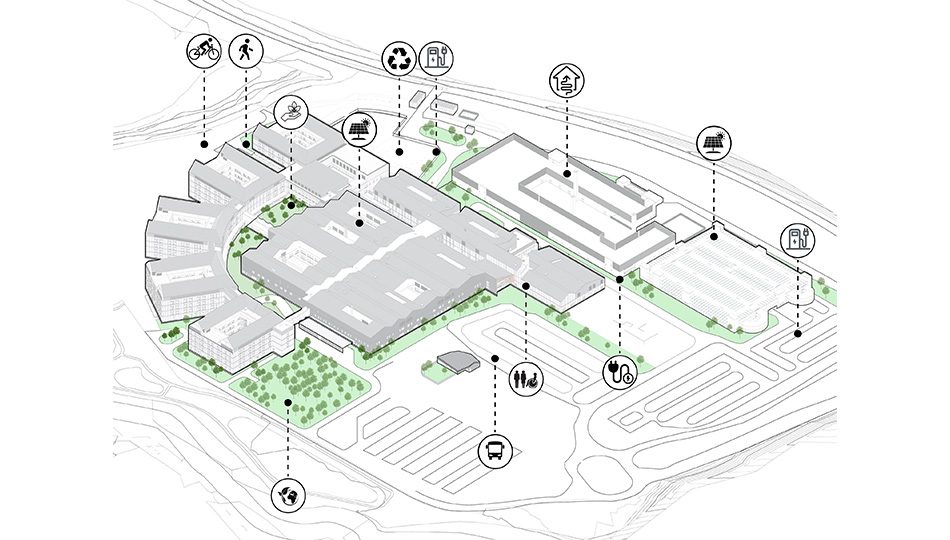
This pioneering project has ambitious net zero carbon goals, in line with NHS Scotland’s new Net Zero Carbon Standard for Public Sector Buildings. Embodied carbon reduction is being vigorously pursued through strict targets, the use of non-fossil fuel primary energy sources and a reduction in operational carbon. The project team’s net zero and embodied carbon experts have also been utilising innovative thermal modelling programs to minimise the hospital’s carbon footprint.
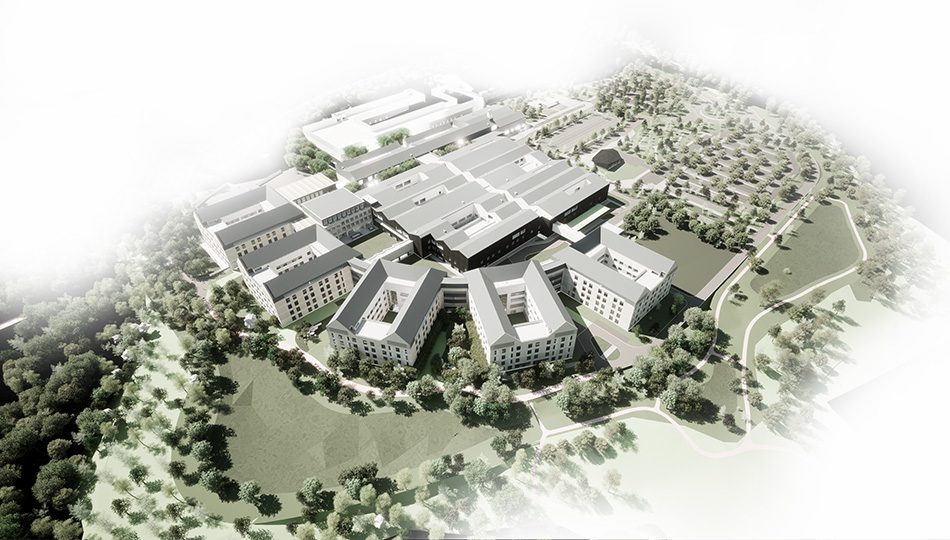
Ecology and biodiversity are integral components of the project plans. The project seeks to make the most of the natural environment in which the hospital will be located, including the connection to and enhancement of the North Calder Water Heritage Trail.
Emphasis is being placed on connecting patients, staff and the public with the outdoors, providing spaces that promote both active enjoyment and peaceful reflection for enhanced well-being.
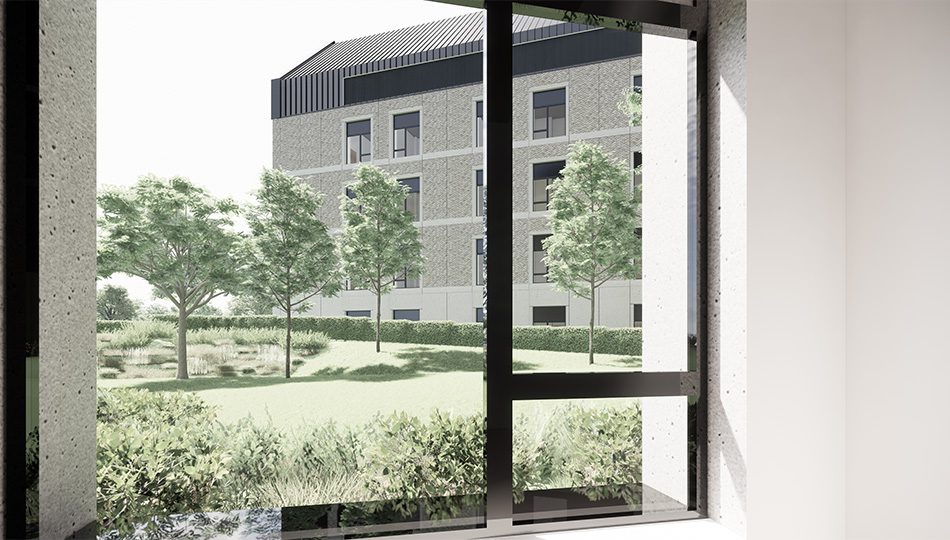
If someone was to say to me you will spend the final chapter of your career as part of a new build hospital team I would not have believed them.
Joining the Monklands Replacement Project 4 years ago after more than 25 years in a clinical and managerial nursing role was not a natural career move however it has been without doubt the most rewarding role. I came from a perioperative background, so all things architecture, engineering and construction were new to me. I had previous experience in smaller departmental projects and service redesign projects prior to this but nothing on the same scale as the MRP. In terms of engineering and construction experience I have helped my father renovate a small, thatched cottage on the Scottish islands so I am not a stranger to a cement mixer, but I very quickly realised that planning and building a new acute hospital is somewhat larger in scale and complexity!
I have also had to learn a new language to ensure successful communication with my new colleagues. It soon became evident that the acronyms we have in a clinical world are nowhere near the amount in the construction world!. Who knew that furniture had a behaviour, characteristic had typology…..
My role in the team is clinical lead/Chief nurse and so it spans all the work streams at some point in the planning process. During the outline business case stage among other responsibilities I worked very closely with our design teams on the 1:200 departmental plans. We had over 100 workshops looking at flows and adjacencies with our site clinical and non-clinical teams and these were crucial to ensure we plan and design the spaces that are needed to deliver and support the care we are providing.
The project secured an approved outline business case in 2023 and we now move to full business case submission in 2025 closely followed by the construction.
Being a clinical lead on a hospital project is both an art and a science. It requires clinical acumen, leadership finesse, and unwavering dedication. So, if you find yourself at this crossroads, embrace the challenge. You’re not just managing a project; you’re shaping the health and well-being of countless individuals and the community it serves for years to come.